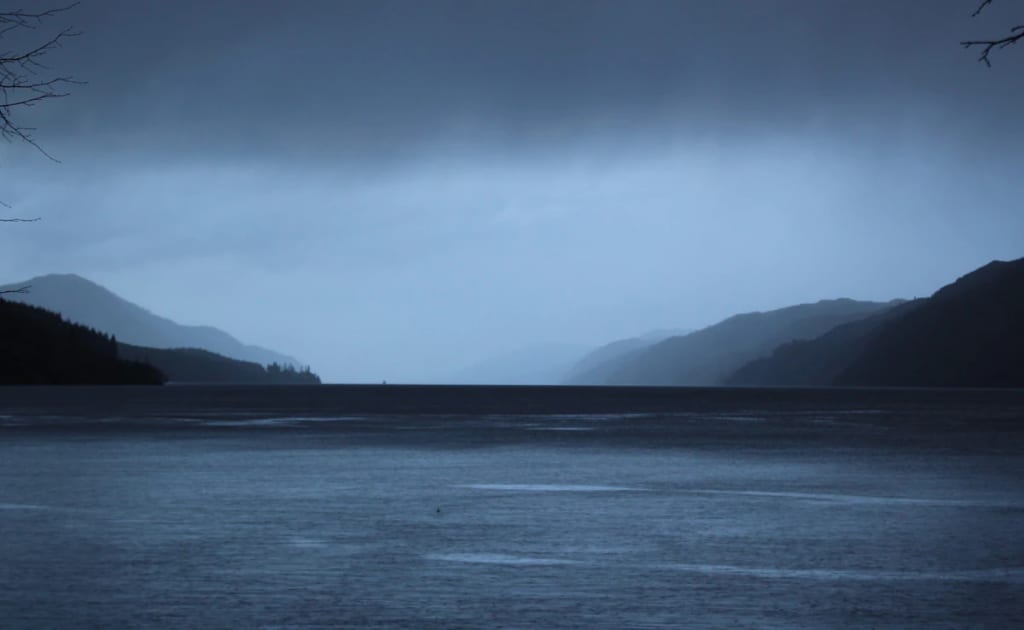Content warning
This story may contain sensitive material or discuss topics that some readers may find distressing. Reader discretion is advised. The views and opinions expressed in this story are those of the author and do not necessarily reflect the official policy or position of Vocal.
Hundreds Accumulate In UK To Track down Loch Ness Beast, Greatest Chase Of all time
The searchers accept the warm scanners could demonstrate essential in distinguishing any bizarre peculiarities in the dinky profundities

The searchers accept the warm scanners could demonstrate urgent in recognizing any weird irregularities in the dim profundities.
The hydrophone will permit the searchers to tune in for uncommon Nessie-like submerged calls.
Extending 23 miles (36 kilometers) and with a most extreme profundity of 788 feet (240 meters), the freshwater loch is the UK's biggest lake by volume.
Antiquated beast
Reports of an oceanic beast sneaking in Loch Ness date back to old times, with stone carvings in the space portraying a secretive monster with flippers.
The earliest set up account of the animal traces all the way back to Promotion 565 in a life story of the Irish priest, Holy person Columba.
As per the text, the beast went after a swimmer and was going to strike again when Columba instructed it to withdraw.
All the more as of late in May 1933, the nearby Inverness Dispatch paper revealed a couple driving along a recently developed lochside street seeing "a gigantic disturbance" in the water.
"There, the animal disported itself, rolling and plunging for completely a moment, its body looking like that of a whale, and the water flowing and stirring like a stewing cauldron," the report said.
In December that year, English paper the Everyday Mail enlisted a South African major game tracker, Marmaduke Wetherell, to find the ocean snake.
Wetherell found huge impressions that he accepted had a place with "an exceptionally strong delicate footed creature around 20 feet in length".
Yet, zoologists at London's Normal History Exhibition hall established that the tracks were made with an umbrella stand or ashtray that had a hippopotamus leg as a base.
In 1934, English doctor Robert Wilson caught what came to be known as the "Specialist's Photo," apparently portraying Nessie's head and stretched neck rising up out of the water.
The photograph, distributed in the Everyday Mail, was subsequently uncovered to be important for a scam, slung the Loch Ness Beast into global popularity.
There are currently in excess of 1,100 authoritatively recorded Nessie sightings, as per The Loch Ness Center in Drumnadrochit, close to Inverness.
The beast gets a great many pounds (dollars) in the travel industry income to the Scottish economy every year.
Ancient reptile
Throughout the long term, researchers and novice lovers have attempted to find proof of an enormous fish, for example, a sturgeon living in the profundities of the loch.
Some have proposed the beast could be an ancient marine reptile like a plesiosaur.
In 1972, the Loch Ness Examination Agency embraced the greatest pursuit to date yet returned with basically nothing.
In 1987, Activity Deepscan conveyed sonar gear across the width of the loch and professed to have seen as an "unidentified object of uncommon size and strength".
In 2018, scientists led a DNA overview of Loch Ness to figure out what creatures live in the waters.
No indications of a plesiosaur or other such enormous creature were found, however the outcomes demonstrated the presence of various eels.
Hundreds Accumulate In UK To Track down Loch Ness Beast, Greatest Chase Of all time
the warm scanners could demonstrate critical in recognizing any unusual irregularities in the dim profundities.
The searchers accept the warm scanners could demonstrate significant in recognizing any peculiar oddities in the dim profundities.
The hydrophone will permit the searchers to tune in for strange Nessie-like submerged calls.
Extending 23 miles (36 kilometers) and with a greatest profundity of 788 feet (240 meters), the freshwater loch is the UK's biggest lake by volume.
Old beast
Reports of a sea-going beast sneaking in Loch Ness date back to old times, with stone carvings in the space portraying a strange monster with flippers.
The earliest set up account of the animal traces all the way back to Promotion 565 in a history of the Irish priest, Holy person Columba.
As per the text, the beast went after a swimmer and was going to strike again when Columba instructed it to withdraw.
All the more as of late in May 1933, the nearby Inverness Messenger paper revealed a couple driving along a recently developed lochside street seeing "an enormous disturbance" in the water.
"There, the animal disported itself, rolling and plunging for completely a moment, its body looking like that of a whale, and the water flowing and stirring like a stewing cauldron," the report said.
In December that year, English paper the Day to day Mail selected a South African major game tracker, Marmaduke Wetherell, to find the ocean snake.
Wetherell found enormous impressions that he accepted had a place with "an extremely strong delicate footed creature around 20 feet in length".
However, zoologists at London's Normal History Gallery verified that the tracks were made with an umbrella stand or ashtray that had a hippopotamus leg as a base.
In 1934, English doctor Robert Wilson caught what came to be known as the "Specialist's Photo," apparently portraying Nessie's head and lengthened neck rising up out of the water.
The photograph, distributed in the Everyday Mail, was subsequently uncovered to be essential for a deception, launch the Loch Ness Beast into global notoriety.
There are currently in excess of 1,100 authoritatively recorded Nessie sightings, as per The Loch Ness Center in Drumnadrochit, close to Inverness.
The beast gets a large number of pounds (dollars) in the travel industry income to the Scottish economy every year.
Ancient reptile
Throughout the long term, researchers and novice fans have attempted to find proof of a huge fish, for example, a sturgeon living in the profundities of the loch.
Some have proposed the beast could be an ancient marine reptile like a plesiosaur.
In 1972, the Loch Ness Examination Department embraced the greatest hunt to date however returned with essentially nothing.
In 1987, Activity Deepscan sent sonar hardware across the width of the loch and professed to have viewed as an "unidentified object of strange size and strength".
In 2018, scientists directed a DNA study of Loch Ness to figure out what creatures live in the waters.
No indications of a plesiosaur or other such enormous creature were found, however the outcomes showed the presence of various eels.
The searchers accept the warm scanners could demonstrate pivotal in distinguishing any peculiar abnormalities in the cloudy profundities.
About the Creator
Enjoyed the story? Support the Creator.
Subscribe for free to receive all their stories in your feed. You could also pledge your support or give them a one-off tip, letting them know you appreciate their work.





Comments
There are no comments for this story
Be the first to respond and start the conversation.